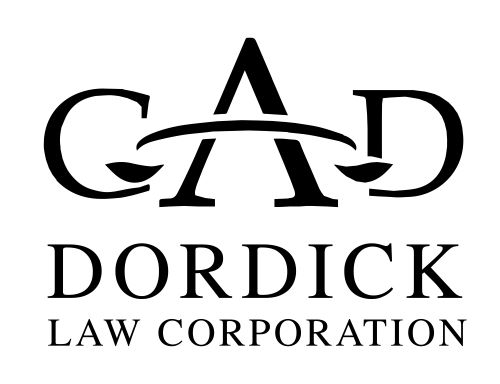PROTEIN: Top Plants that are High in Protein
Today I saw a “food guide” posted on Facebook that listed (Proteins, Carbs, Fats). Being someone who champions the real health benefits of a Plant-Strong Diet, I was totally bummed and somewhat disppointed that under the “Protein” column, there was “NO” mention of any other sources of protein other than from animals. Not one mention of PLATE BASED PROTEINS..!!! * "Note as a result of countless studies & research, it's a fact that animal protein is not healthy for us. Animal protein has no real nutritional benefits, nor do our bodies require it." I know that statement is going to open a can of worms. (People are also a bit Protein Obsessed in this country, but that's another article to be written later.)
So in hopes of educating and informing, I decided to post the following. Please read on….
PROTEIN: Top Plants that are High in Protein
Protein is an essential part of any diet and vegetables are a great way to get more protein into your diet. This seemingly insignificant nutrient is deceptively hard-working and is vital to every cell, tissue, bone, and muscle in your body. Protein has many different functions and given that is makes up a massive 40% of our bodies’ dry matter, it begins to become clear how significant protein is. Protein is key to the growth and repair of your muscles, bones, ligaments, tissues, and even your hair, skin and nails. It also boosts your immune system and helps your body fight infection. It maintains bodily functions, such as digestion, metabolism and circulation.
Although I think many people are “Protein Obsessed”, (too much protein isn’t good for your body either and too much protein when processed will turn to Fat, believe it or not, it’s a fact!) Most people are consuming 50% more protein than what they need. That extra protein is stored as fat and also paces an extreme burden on your kidneys. Also people have been so brain-washed that the only way to get protein is via animal sources. Being a strict Vegetarian, I know this statement to be totally incorrect!
Vegetables do have substantial protein levels and can act as great substitutes for animal proteins (without some of the health risks associated with animal protein) and adding more vegetables into your diet is crucial for a number of factors. For one they are highly dense in nutrition with a low calorie count while providing you with a whole range of essential vitamins and minerals that are needed to maintain your basic cell metabolism and strengthen your immune system.
Did you know a cup of broccoli had 3 grams of protein, better yet..did you even know broccoli was a protein source?
Per calorie, broccoli has more protein than steak!
A 1/4 cup of Almonds contain 8 grams of protein!
Various vegetables, nuts, seeds, beans and legumes are all good meatless protein choices. These groups of food each contain different amino acids (the building blocks of proteins) and different levels of protein quality. (There is no need to consume certain foods in special combinations as nutritionists once thought! When your diet includes a variety of each of these types of foods, you can rest assured that you’re getting all the amino acids you need for muscle growth and cell repair.)
If you keep reading you will quickly see (and understand) that protein is EVERYWHERE in our diet, and even without meat you can get enough every day; you just have to look in the right places!
> Here are just some of the best protein-packing vegetables available:
Asparagus- Per serving, asparagus delivers over 3g of protein. This lanky, green vegetable is extremely versatile, as it can be boiled, grilled, sauteed or steamed.
Cauliflower- Excellent in curries and soups and equally appealing eaten mashed or as a steamed side dish; not only is cauliflower versatile and healthy but it contains 3g of protein per serving.
Broccoli and Brussels Sprouts- Tying for fourth place are two more examples of healthy, green vegetables: broccoli and brussels sprouts. Both of these vegetables are protein-rich, low in fat and easily prepared; making them ideal side-dishes.
Artichoke- Artichoke is another vegetable that is high on the list when it comes to protein content. Serving up just under 3g of protein per serving, artichokes are an excellent addition to pasta, salads and soups and provide an earthy, intense flavor.
Watercress- Tiny yet surprisingly rich in protein, watercress is next on the list. Per 100g serving, watercress delivers almost 3g of protein, which, for its size, renders it an excellent source of the nutrient. Perfect for salads, soups and sandwiches, watercress can easily find its way into your diet.
Sweetcorn- It might be slightly more calorific than the other vegetables listed here, but sweetcorn also has its benefits: Per serving, it contains almost 3g of protein and is a delicious addition to many popular recipes.
Kale, Spinach, Chard- are just a few more to add to the list and some of my favorites!
> Here’s some other place to find your protein:
* Nuts / 1/4 cup / Protein
Peanuts, raw – 9 g
Almonds, dry roasted – 8 g
Pistachios – 6 g
Hazelnuts – 5 g
Pine nuts – 5 g
Cashews, raw – 5 g
Walnuts – 4 g
Nuts provide a good dose of protein along with some heart-healthy fatty acids and antioxidants (vitamins A and E). They are also packed full of fiber. Take your pick! Many nuts have a significant source of protein ready to work for your body. Peanuts, almonds, pistachios, cashews, and pine nuts are among the highest in protein, while chestnuts and hazelnuts, although they do still have some protein, are the lowest. Think out of the box when you’re adding nuts to your diet. They can be grated, toasted, ground or eaten raw and are great when combined with salads, wraps, soups and stews and baked goods. But pay special attention to portion size! Nuts are a great source of many nutrients, but do come with a hefty dose of calories, thanks to the healthy fats they contain. A single serving is just 1 oz! Many nuts are best when stored in a refrigerator, which helps keep their fats from going rancid (for up to 6 months).
___________________________________
* Legumes / 1 cup cooked / Protein
Soybeans – 29 g
Lentils – 18 g
Split peas – 16 g
Navy beans – 16 g
Garbanzo beans (chickpeas) – 15 g
Black beans – 15 g
Kidney beans – 15 g
Lima beans – 15 g
Pinto beans – 14 g
Beans- Beans top the list when it comes to protein-rich food sources. Pinto, garbanzo, white, kidney, lima and soy beans are all packed with protein. Per 100g, the average protein content of beans is 9g, but some varieties contain as much as 12g per 100g – making the almighty bean the vegetarian source of protein.
Dried peas, beans and lentils belong to a group of food known as “pulses” or “legumes.” Aside from soybeans, these plants have a very similar nutrient content, which includes a good dose of protein. On average, they have about 15 grams of protein per cup, and tagging along with the essentials protein are fiber andiron. Adding beans, lentils and dried peas to your meals is a great way to replace meat (a beef burrito can easily become a black bean burrito, for example) while still getting your much needed protein. Add pulses to soups, salads, omelets, burritos, casseroles, pasta dishes, and more! Make bean dips (such as hummus, which is made from garbanzo beans, or black bean dip) to spread on sandwiches and use as protein-packed dips for veggies or snack foods.
_____________________________
* Soy Foods / Protein
Soybeans, 1 cup cooked – 29 g
Tempeh, 4 oz cooked – 21 g
Edamame, 1 cup shelled – 20 g
TVP, 1/4 cup dry – 12 g
Soy nuts, 1/4 cup roasted – 11 g
Tofu, 4 oz raw – 9 g
Soy nut butter, 2 tablespoons – 7 g
Soymilk, 1 cup sweetened – 7 g
Soymilk, 1 cup unsweetened – 7 g
Soybeans are a complete protein that is comparable in quality with animal proteins. Eating soybeans (and foods made from soybeans) has been growing trend in America for only five decades, but this protein-rich bean has been a staple in Asia for nearly 4,000 years! This plant powerhouse is used to create a variety of soy-based foods that are rich in protein: tofu, tempeh, textured vegetable protein (TVP, a convincing replacement for ground meat in recipes), soymilk and “meat analogs,” such as vegetarian “chicken” or faux “ribs” are all becoming more popular as more Americans practice vegetarianism.
___________________________________
* Grains / Protein
Amaranth, 1 cup cooked – 9 g
Quinoa, 1 cup cooked – 9 g
Whole wheat pasta, 1 cup cooked – 8 g
Barley, 1 cup cooked – 7 g
Spelt, 4 oz cooked – 6 g
Oats, 1 cup cooked – 6 g
Bulgur, 1 cup cooked – 6 g
Buckwheat, 1 cup cooked – 6 g
Brown rice, 1 cup cooked – 5 g
Whole wheat bread, 1 slice – 4 g
Sprouted grain bread, 1 slice – 4 g
In a culture that focuses largely on wheat, it’s easy to overlook the many types of other grains available to us. Some of these grains are very high in protein and can be included in your diet for both whole-grain carbohydrates and muscle-building protein. Quinoa is unusually close to animal products in proteinquality, making it an excellent grain to replace white rice or couscous. It can also be cooked and mixed with honey, berries and almonds in the morning for a protein-packed breakfast. Other grains high in protein include spelt, amaranth, oats and buckwheat. Choose whole-grain varieties of cereals, pastas, breads and rice for a more nutritious meal.
_______________________________________
* Seeds (1/4 cup) / Protein
Hemp seeds – 15 g
Pumpkin seeds, roasted – 9 g
Flaxseed – 8 g
Sunflower seeds, roasted – 8 g
Sesame seeds, roasted – 6 g
Seeds are another great way to grab a few grams of protein and many other nutrients. Healthful unsaturated fats, as well as phytochemicals, make seeds a powerhouse for heart disease and cancer prevention. Just a quarter cup of pumpkin seeds (also called pepitas) has 8.5 grams of protein. Add this amount to a salad or eat them plain for a quick snack. Sunflower seeds are easy to add to pasta or salads, or sandwich wraps, while sesame seeds are easily ground and sprinkled onto steamed veggies for a protein dusting.
Again, as you can see, protein is EVERYWHERE in our diet, and even without meat you can get enough every day; you just have to look in the right places!
EAT HEALTHY AND THRIVE. Enhance Performance and Recover Faster! Sound Nutrition is The Competitive Edge. (By Markus & Texas Boesch/Eat Health and Thrive)



